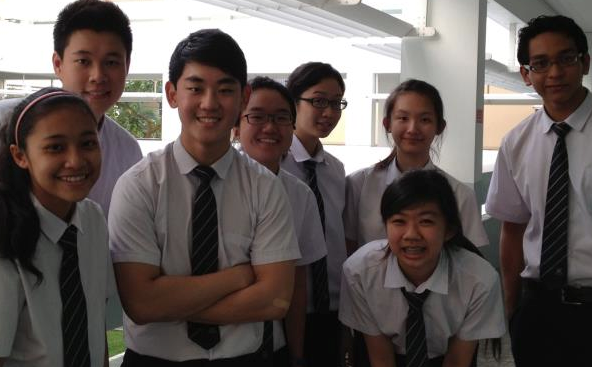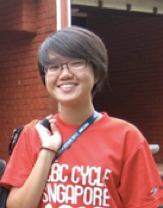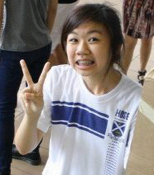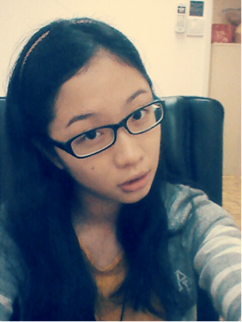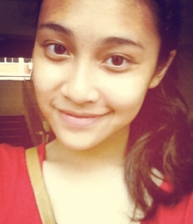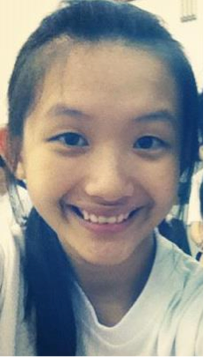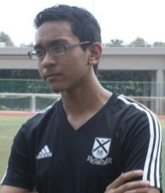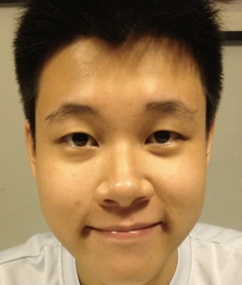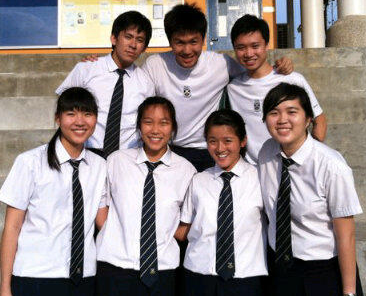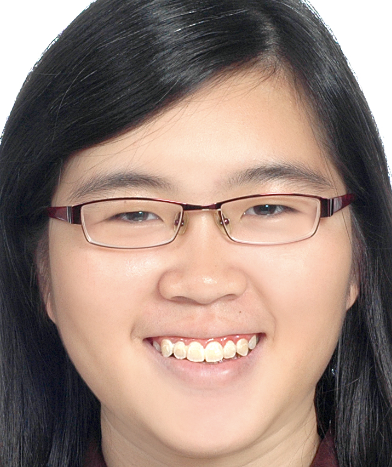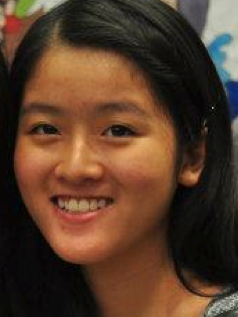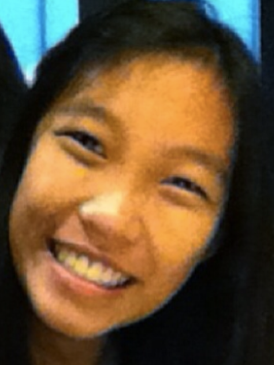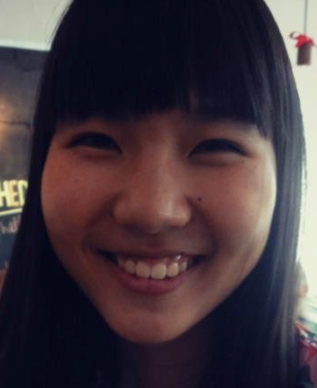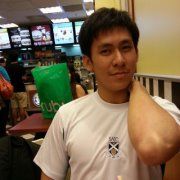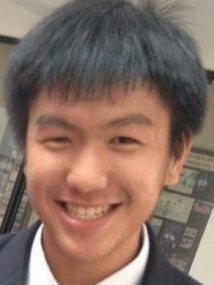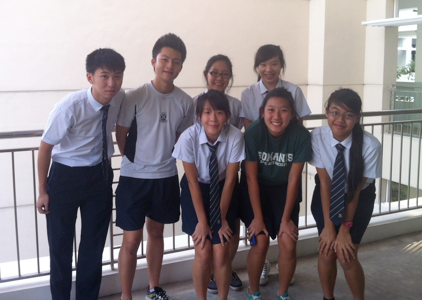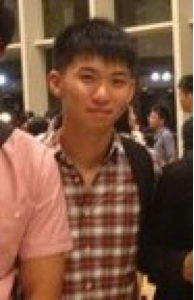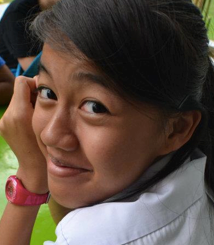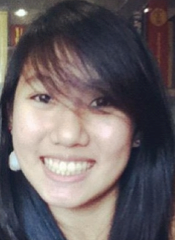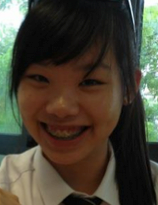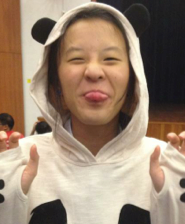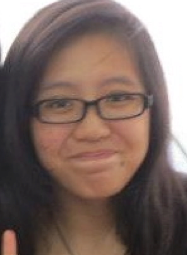Day 03 - Tower of London/ National Gallery/ Westminster Abbey/ Southbank Christmas Markets
 Originally, Day 3 of Literary London was projected to have rainy, blistering cold weather. Fortunately, the weather forecast was proven wrong and for the morning and most of the afternoon, we enjoyed sunshine and clear skies. Though the wind was initially rather strong, we soon got acclimatised to the chill and as we walked on in the sunlight, our bodies were eventually warmed up. Nevertheless, the combination of the cold wind on our faces and the bright sunlight woke us up quite effectively. The good weather made it possible for us to have numerous photo opportunities on our way from London Bridge Station to Tower Bridge. The view of Tower Bridge cast against a cloudless blue sky was just breathtaking, and most of us managed to capture with our cameras this iconic bridge under clear blue skies.
Originally, Day 3 of Literary London was projected to have rainy, blistering cold weather. Fortunately, the weather forecast was proven wrong and for the morning and most of the afternoon, we enjoyed sunshine and clear skies. Though the wind was initially rather strong, we soon got acclimatised to the chill and as we walked on in the sunlight, our bodies were eventually warmed up. Nevertheless, the combination of the cold wind on our faces and the bright sunlight woke us up quite effectively. The good weather made it possible for us to have numerous photo opportunities on our way from London Bridge Station to Tower Bridge. The view of Tower Bridge cast against a cloudless blue sky was just breathtaking, and most of us managed to capture with our cameras this iconic bridge under clear blue skies.
At this point, we discovered that this bridge, what some of us previously thought was London Bridge, is actually Tower Bridge. Admittedly, I never knew that!
We then crossed Tower Bridge to the other side of the River Thames and headed towards the Tower of London.
Historically, the Tower of London was a prison, a fortress, and an execution ground. However, it has now been converted into a tourist attraction and also houses the Crown Jewels. Here, we learnt about the tumultuous history of England and about some of the gruesome stories of torture and executions that happened within its walls. In the White Tower, we also got to see some of the armour and weapons used by different kings and princes. For example, we got to see King Henry VIII’s armour.
Personally, I think the Tower of London is interesting because times have changed so much since it was built and yet it still exists today as an important historical landmark regarded with respect and treated as a representation of England’s rich history. The design and build of the Tower of London also intrigued me, because the towers are built within the walls not along the walls. I now see how strong this building has proven itself to be, despite being built centuries ago with much simpler and rudimentary forms of technology, and I am truly amazed. Of course, our visit to the Tower of London was not all horror stories about bloody executions and conflict within the royal families. We also got to see the Crown Jewels! We all gazed in awe of the intricately designed crowns, scepters, swords and even a huge punch bowl, all of which were specially prepared for the coronations of the different monarchs. This exhibition even outlined the coronation process and showed us a video of the current queen’s coronation, and all the information was presented in manageable, bite-sized portions, which made it easier for us to understand. Since Singapore has never really had a monarch that we serve in submission, I never imagined how much effort and hard work must have gone into the designing and creation of items such ceremonial cups and bowls. Some of us even got to bring home 1 pence coins that were pressed into the shape and design by a manually-operated machine!
After having lunch at the Tower of London, we made our way to the National Gallery, which is located at Trafalgar Square. We took the tube there, providing us with a chance to get used to the Tube system in London. While waiting to enter the National Gallery, we watched a contortionist perform right outside the gallery. That made me wish I did not eat my lunch. I suppose it is not something that we are used to, because Singapore prohibits busking without a license, and such an act could be deemed in our country as an outrage of modesty. The contortionist was dressed in nothing more than trousers and some shoes in this wintry cold weather. In all, that was quite a bizarre sight. Furthermore, we chanced upon some tanks and armoured vehicles that are being used for Tom Cruise’s new movie. Unfortunately, he was not there in person. We had missed him by just one day. It seems like Trafalgar Square has had a substantial influence on both history as well as pop culture. Surrounding the square are 4 statues, out of which 3 are historical in nature. The last statue is usually a modern statue that is changed every few months. Within the museum itself, we were divided into 2 groups to attend a guided tour by our guide. We were also given a list of paintings by our teachers to analyse, because these paintings reflect the topic of Individual and Society. Through this activity, I learnt how to see the link between the themes I have learnt in my study of literature and to be able to see how the details in a painting change or substantiate a certain idea that the artist wants to put forth. For example, one painting that stood out in my opinion was the portrait of Helene Rouart in her Father’s Study. She is seen standing behind her father’s empty study chair, gazing off into the distance. I cannot tell her expression for sure, but she is not smiling, and this suggests some sort of discomfort in being in the study. This suggests that she is well aware of her place, and that the study, which belongs to her father, is not her place. This is why she does not sit in the chair, even though it is empty. It is symbolic of her father’s place as in the study and consequently, head of the household. In this case, the topic of Individual and Society is represented through the relationship between a daughter and her father, and how she needs to know her place and not interfere in his authority. I now know what to look out for when trying to interpret a painting and this has helped to develop my analysis skills. Though I wish we had more time to explore the vast collection of art in the National Gallery, we were pressed for time and had to move off to Westminster Abbey for evening service.
 Upon arriving at Westminster Abbey, we had some time to walk around the outside of the church before proceeding in for service. We were introduced to 2 prestigious schools meant for children of the elite, both housed within the premises of the Abbey. After our short tour of the exterior of the Abbey, we entered the church for service at 6.30pm. This church has been known for the many important events that have happened in history, like the coronations of the monarchs and, more recently, the wedding of Prince William and Kate Middleton. I remember watching the wedding on the television and noticing the design of the church. Being able to see it in real life, from both the exterior and the interior, has confirmed my observation of its sheer grandeur. From a brief walk around the church, we noticed the memorials and graves of famous people who have contributed greatly to Britain. Westminster Abbey also contains Poet’s Corner, where the country’s great writers are remembered for their contributions to the literary scene. The service we attended justifies my impression that London is a modern city steeped in tradition. The prayer and worship leader may be hooked up to the sound system, where technology gives his voice a boost, but the practices of the church are still very much traditional.
Upon arriving at Westminster Abbey, we had some time to walk around the outside of the church before proceeding in for service. We were introduced to 2 prestigious schools meant for children of the elite, both housed within the premises of the Abbey. After our short tour of the exterior of the Abbey, we entered the church for service at 6.30pm. This church has been known for the many important events that have happened in history, like the coronations of the monarchs and, more recently, the wedding of Prince William and Kate Middleton. I remember watching the wedding on the television and noticing the design of the church. Being able to see it in real life, from both the exterior and the interior, has confirmed my observation of its sheer grandeur. From a brief walk around the church, we noticed the memorials and graves of famous people who have contributed greatly to Britain. Westminster Abbey also contains Poet’s Corner, where the country’s great writers are remembered for their contributions to the literary scene. The service we attended justifies my impression that London is a modern city steeped in tradition. The prayer and worship leader may be hooked up to the sound system, where technology gives his voice a boost, but the practices of the church are still very much traditional.
Finally, we ended off the day with dinner and shopping at the Southbank Christmas Markets. The experience was similar to what I have seen in Vienna’s Christmas markets, but the range of stalls here was narrower than in Vienna. In any case, we had great food and a short opportunity to shop for goodies, Christmas items and other gifts. Today has indeed been a tiring and busy day, but a fulfilling one, nonetheless. I am certain that we have all had our analysis skills sharpened over the course of the day and learnt more about the history of London and Britain’s monarchy. Truly unforgettable!
Written by Isabelle Ng 12A06 (Group A)
We will gather at Changi Airport Terminal 1, Row 2 (Flight EK 007) at 6.30pm for our overnight flight to London via Dubai.
1. Panoramic Tour of the city with a Blue Badge Guide (in the morning)
Highlights: able to see iconic places in London such as the Buckingham Palace, the Horse Guards, St Paul’s Cathedral, Tower Bridge, and all the other famous London landmarks.
2. British Museum (in the afternoon)
Highlights: attend a special exhibition “Staging the World” at the British Museum, which provides a unique insight into the emerging role of London as a world city, seen through the innovative perspective of Shakespeare’s plays.
1. Brixton Market (in the morning)
Highlights: appreciate the diverse community of Brixton through its well-known African and Caribbean produce.
2. Houses of Parliament (in the afternoon)
Highlights: learn more about the British Parliament’s current work and history through a Guided Tour.
1. Tower of London (in the morning)
Highlights: a historic castle founded towards the end of 1066. It is a World Heritage Site today.
2. National Gallery (in the afternoon)
Highlights: an art museum founded in 1824, it houses a collection of over 2,300 paintings dating from the mid-13th century to 1900. It is the fourth most visited art museum in the world.
3. Even Song at Westminster Abbey (in the evening)
Highlights: witness the beautiful architecture of Westminster Abbey and experience of the beauty of music.
4. Southbank Christmas Markets
1. Gumley House Convent School
Highlights: a full day of interaction and activities with local students. It is an opportunity to experience studying under the British education system.
2. Let It Be (in the evening)
Highlights: a musical based on the lives of The Beatles.
1. Charles Dickens Walk (in the morning)
Highlights: strolling through the courtyards of Lincolns Inn where Dickens set his famous novel “Bleak House”, finding out how Dickens contributed to the founding of London’s first and most famous childrens’ hospital and viewing a 15th century dining hall and a 17th century chapel.
2. Royal Courts of Justice (in the afternoon)
Highlights: learning about the history, art and architecture of the Royal Courts of Justice. In addition, learn about the different roles and working spaces in court.
3. War Horse
Highlights: a play based on the book of the same name by acclaimed children's writer Michael Morpurgo.
1. Drama Workshop at the Globe Theatre (in the morning)
Highlights: the focus will be on the aspects of Shakespearean performance via an introduction on Othello.
2. Tate Modern
Highlights: emphasis on the portrayal of individuals in modern art and implications vis the relatioinship of the individual and society in the 20th and 21st centuries.
3. Richard III
Highlights: a play by William Shakespeare. It depicts the Machiavellian rise to power and subsequent short reign of Richard III of England.
1. Oxford
Highlights: Meeting Nuala Young, former City Councillor. Discovering the challenges faced with respect to managing the University Town. Going on the walking tour of Oxford and uncovering the literary heritage of Oxford.
1. Singapore High Commission
Highlights: learn about Singapore’s Trade and Economic ties with Britain.
2. Poetry and Dialogue Session with published poet and former BBC Poet-in-Residence
Highlights: A face-to-face session that will allow students to listen to the reading of his poems, understand his inspiration and learn how they are formed.
1. Borough Market (in the morning)
Highlights: see how the Urban Space Management helped win significant regeneration funds under the title “London’s Larder”. The project rapidly moved to become one of the country’s best known food retail markets.
2. Imperial War Museum (in the afternoon)
Highlights: focusing on war poets.
1. Check out of the hotel and board the waiting coach.
2. Possibly drive through the Docklands and East London to see how the area has been redeveloped for the London Olympics.
Arrive in Singapore in the evening.
